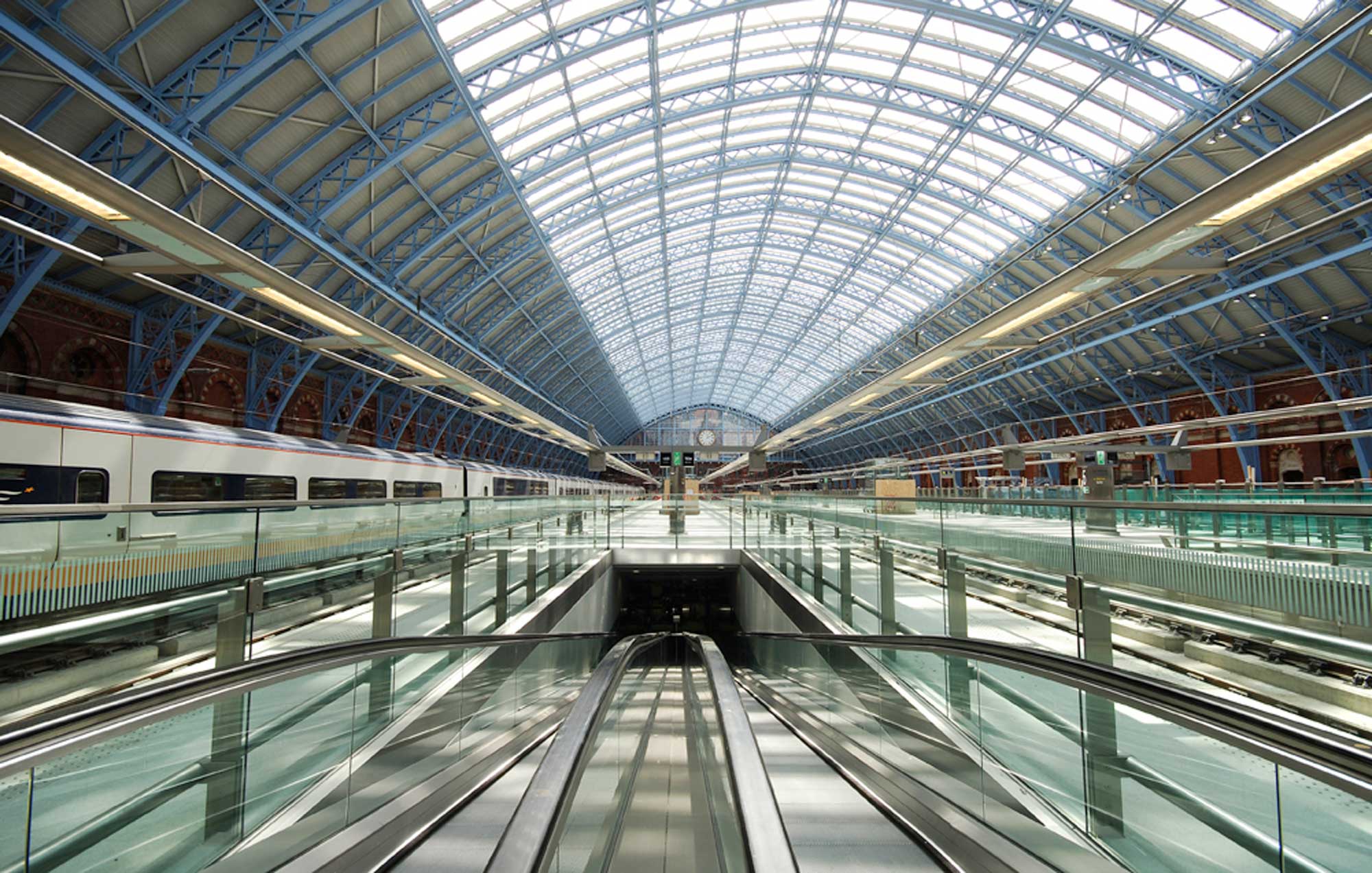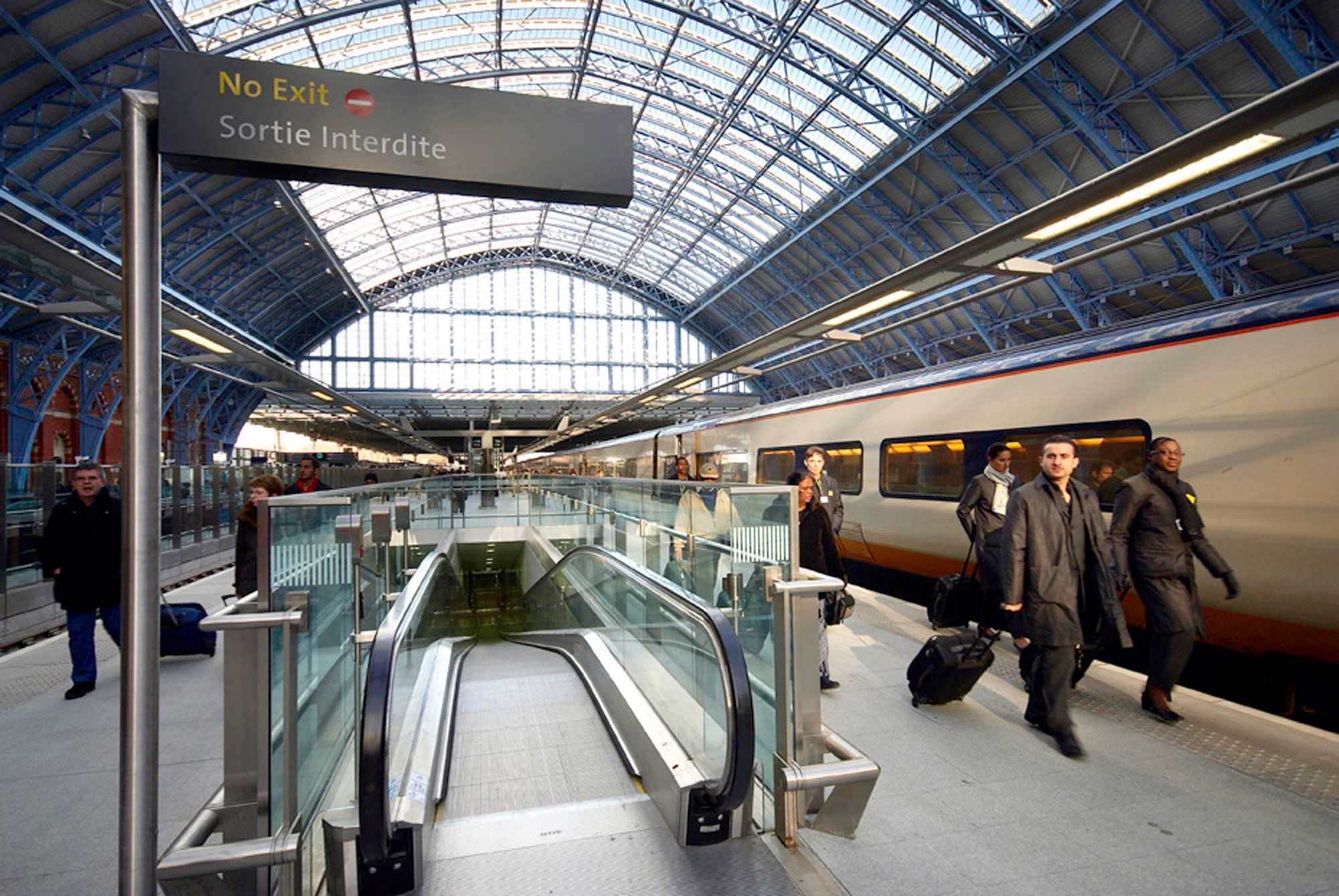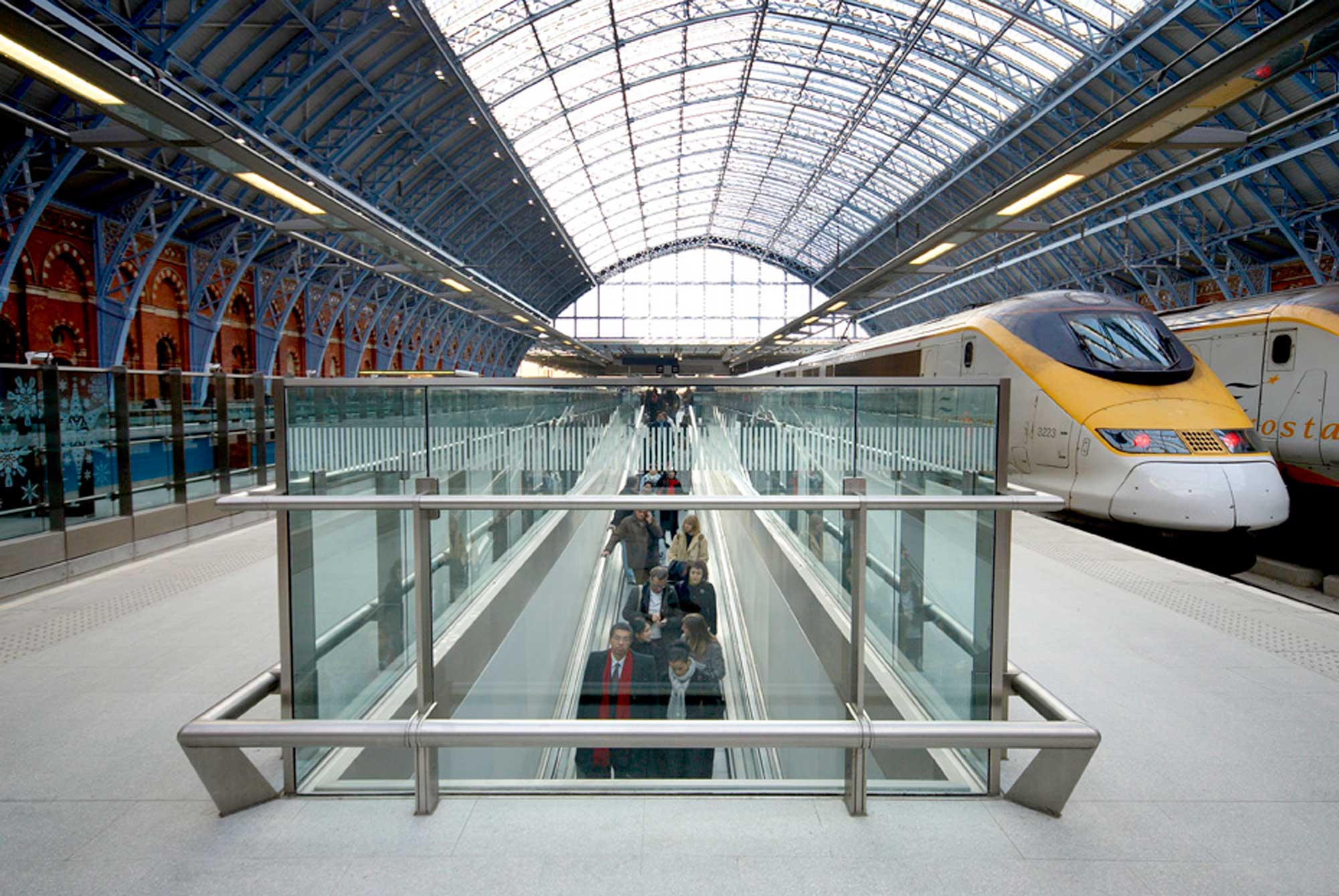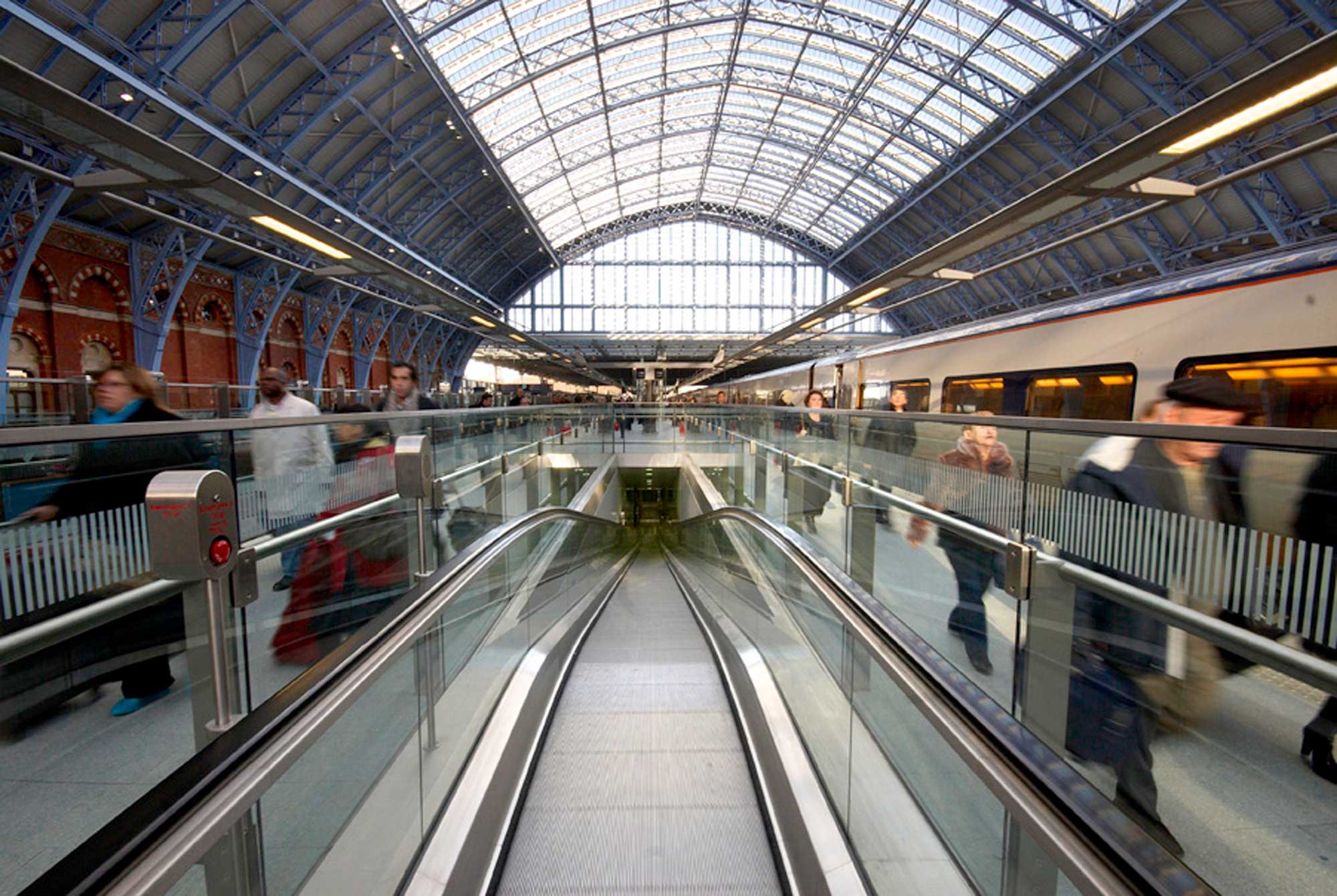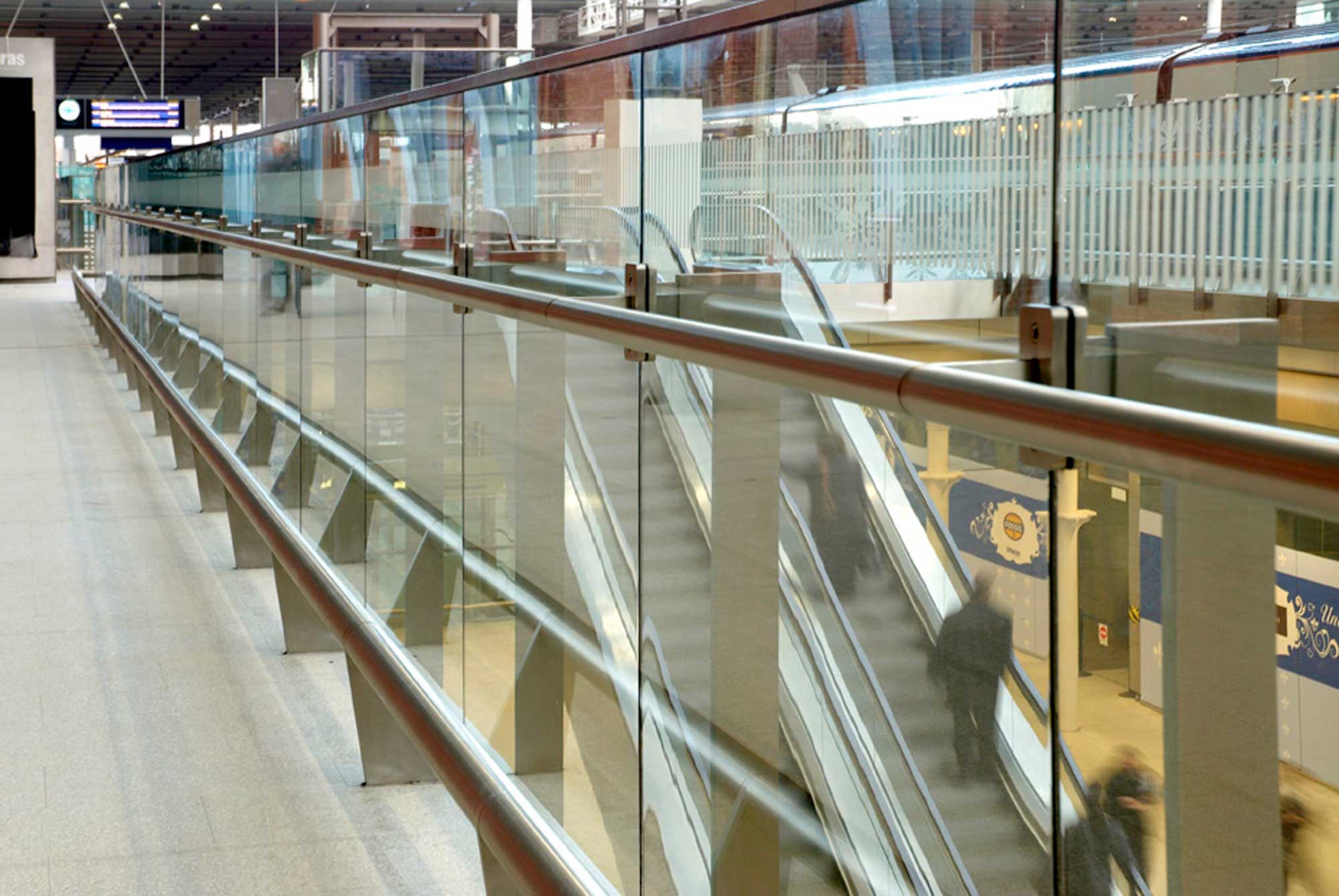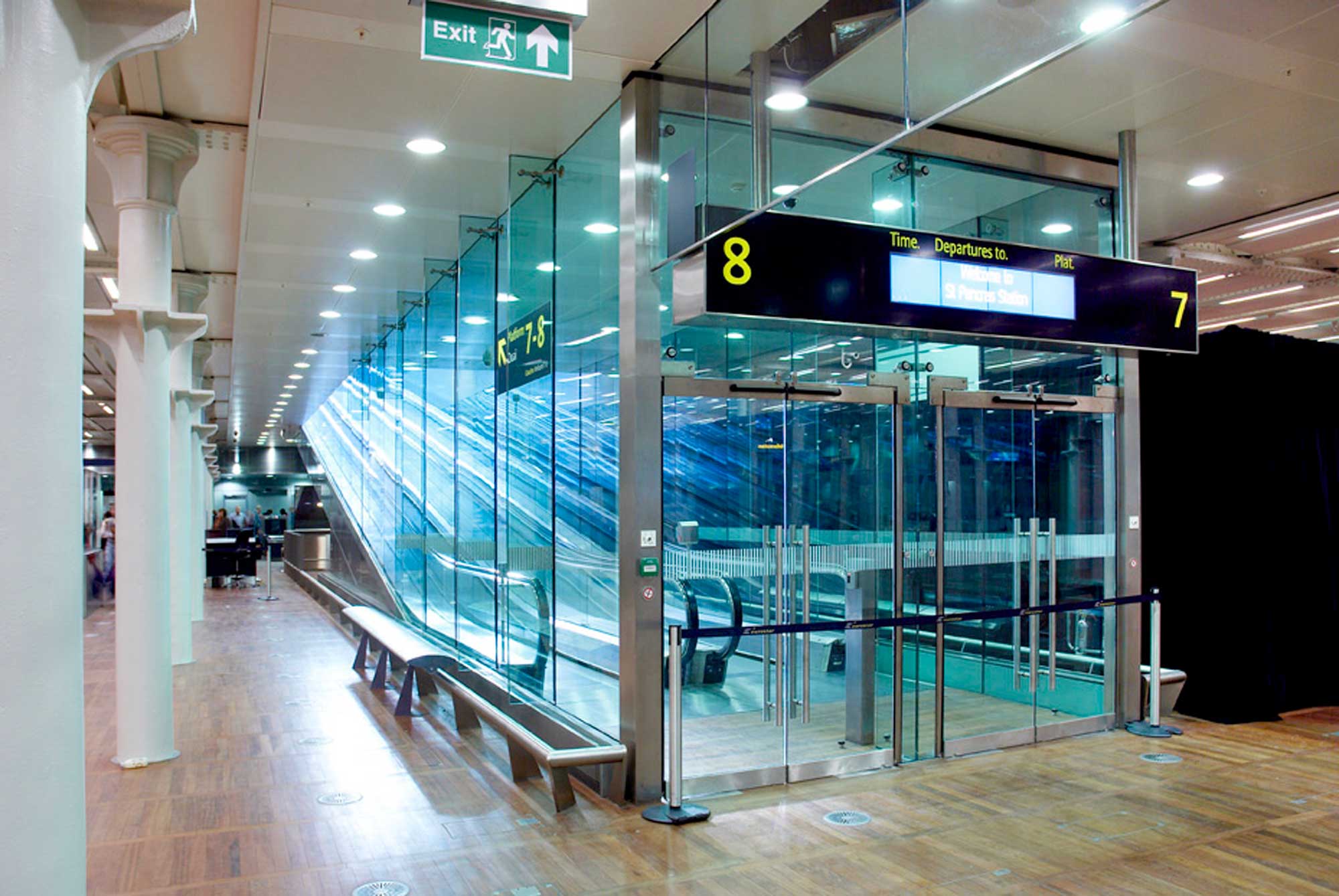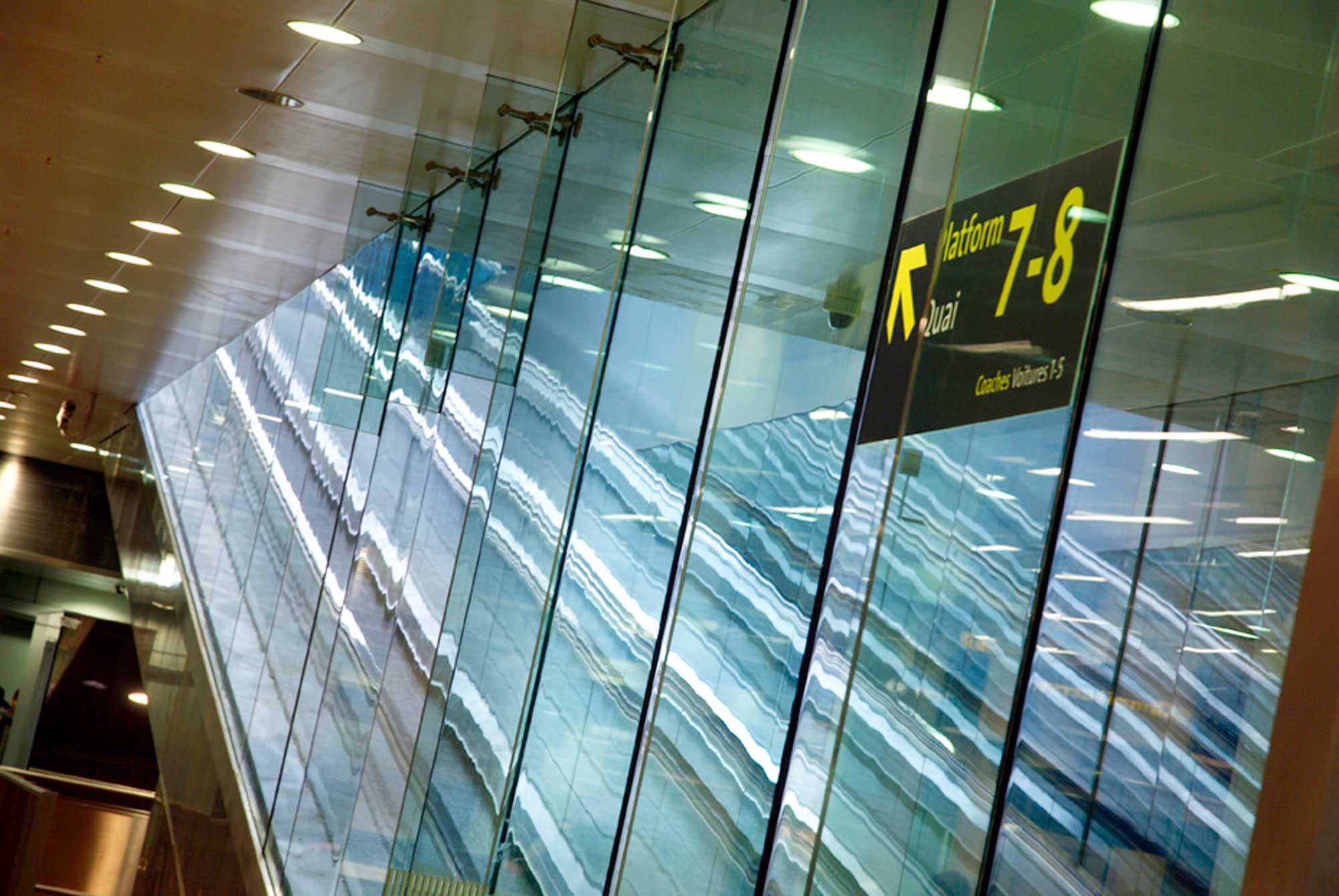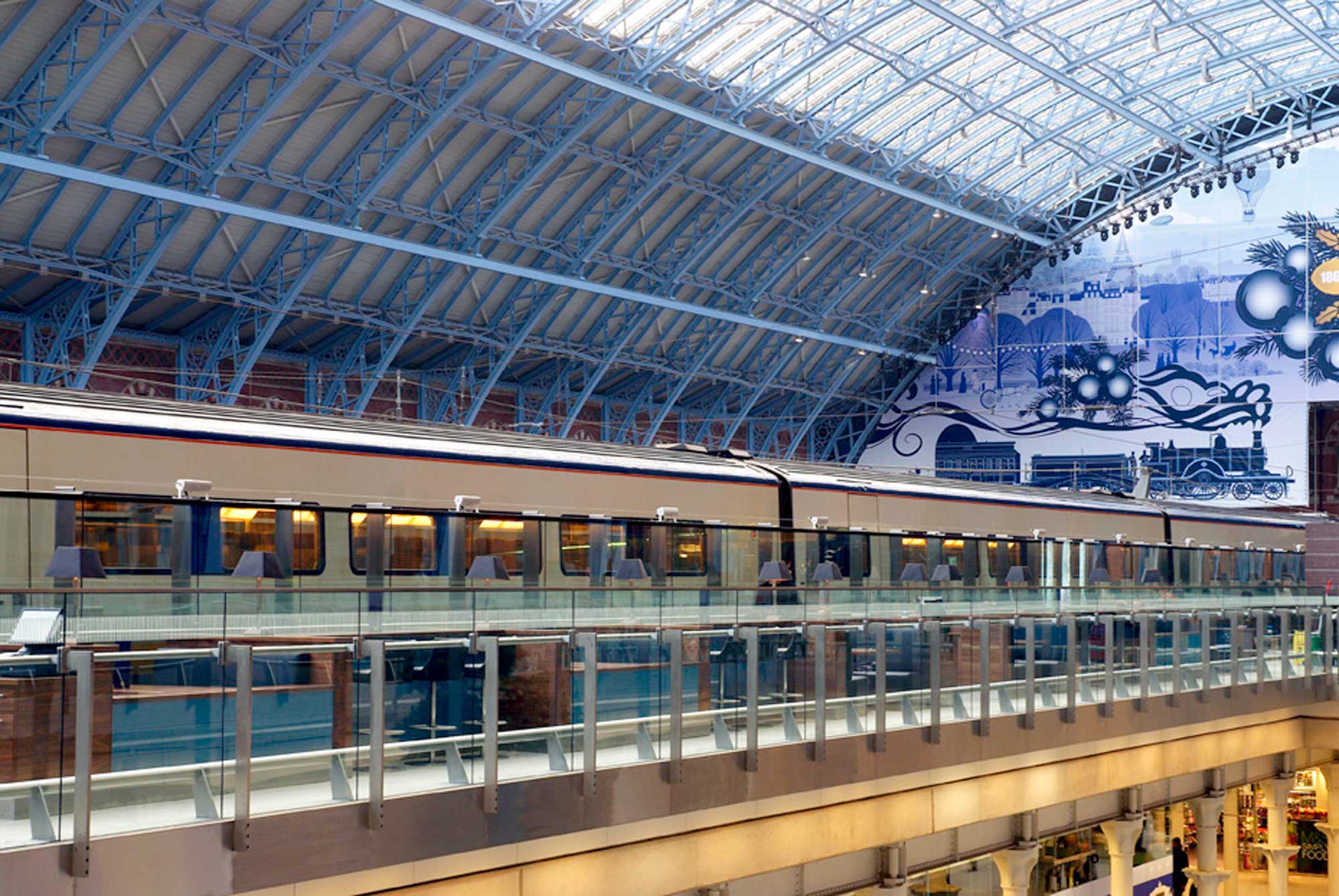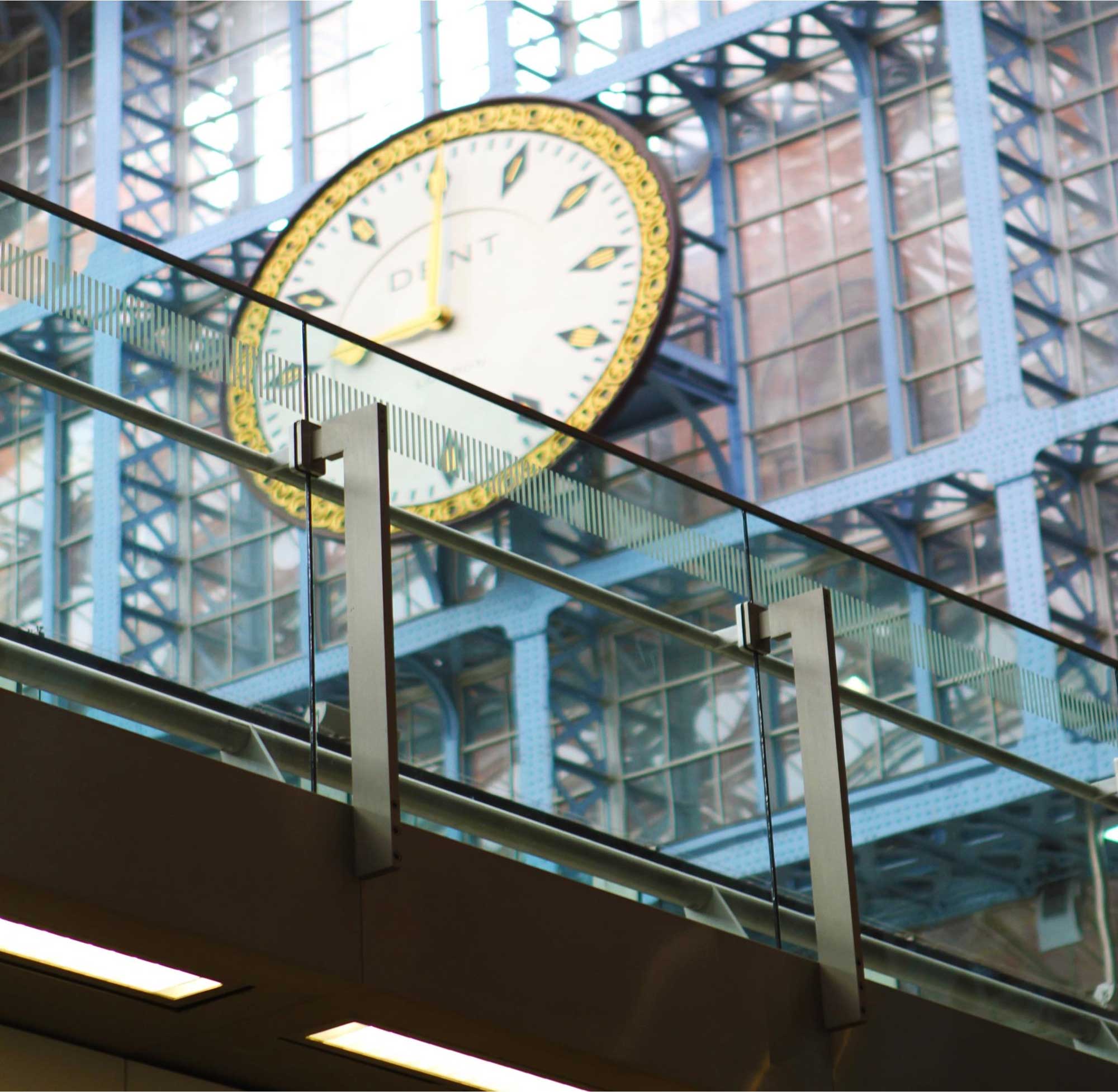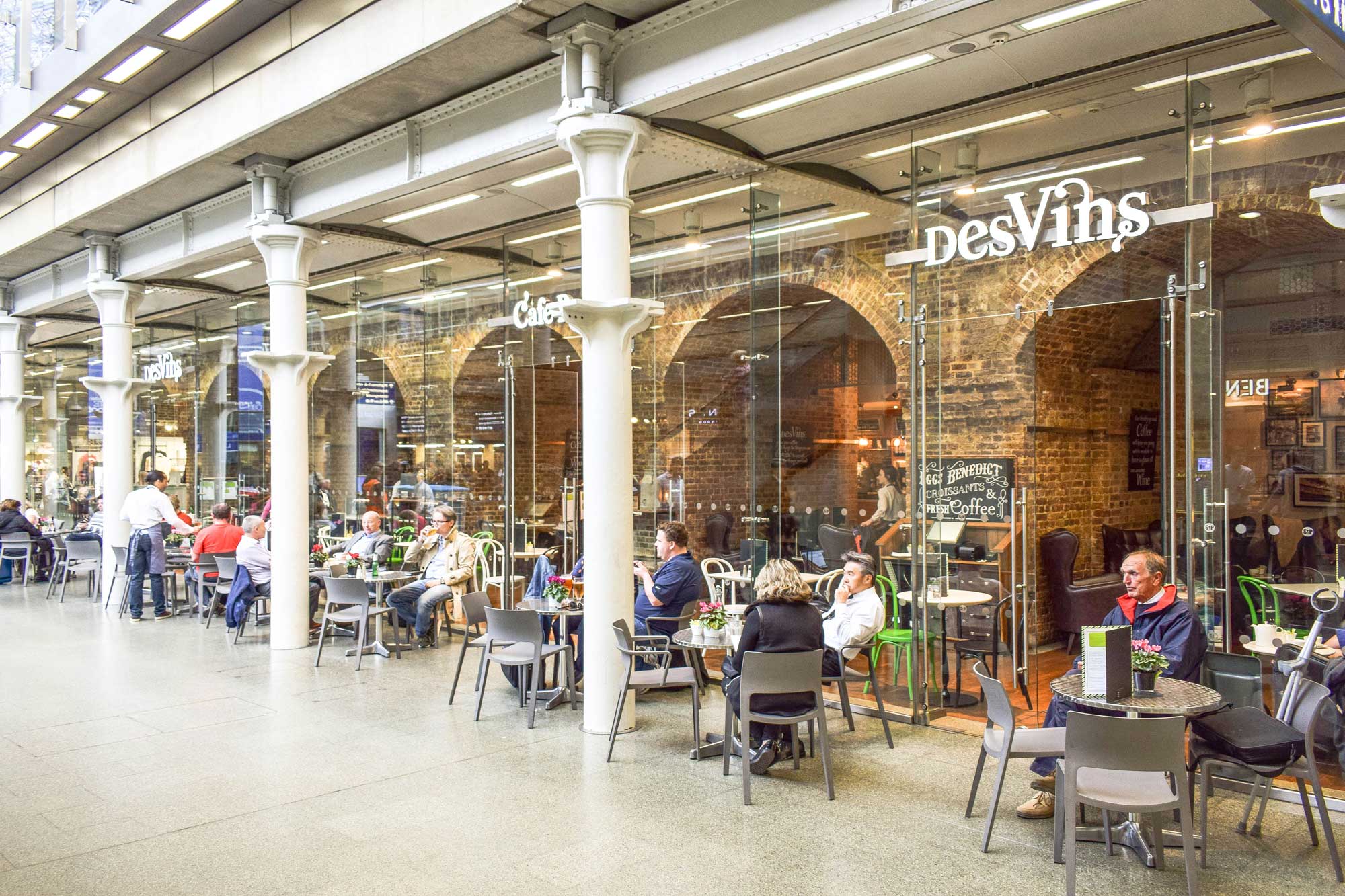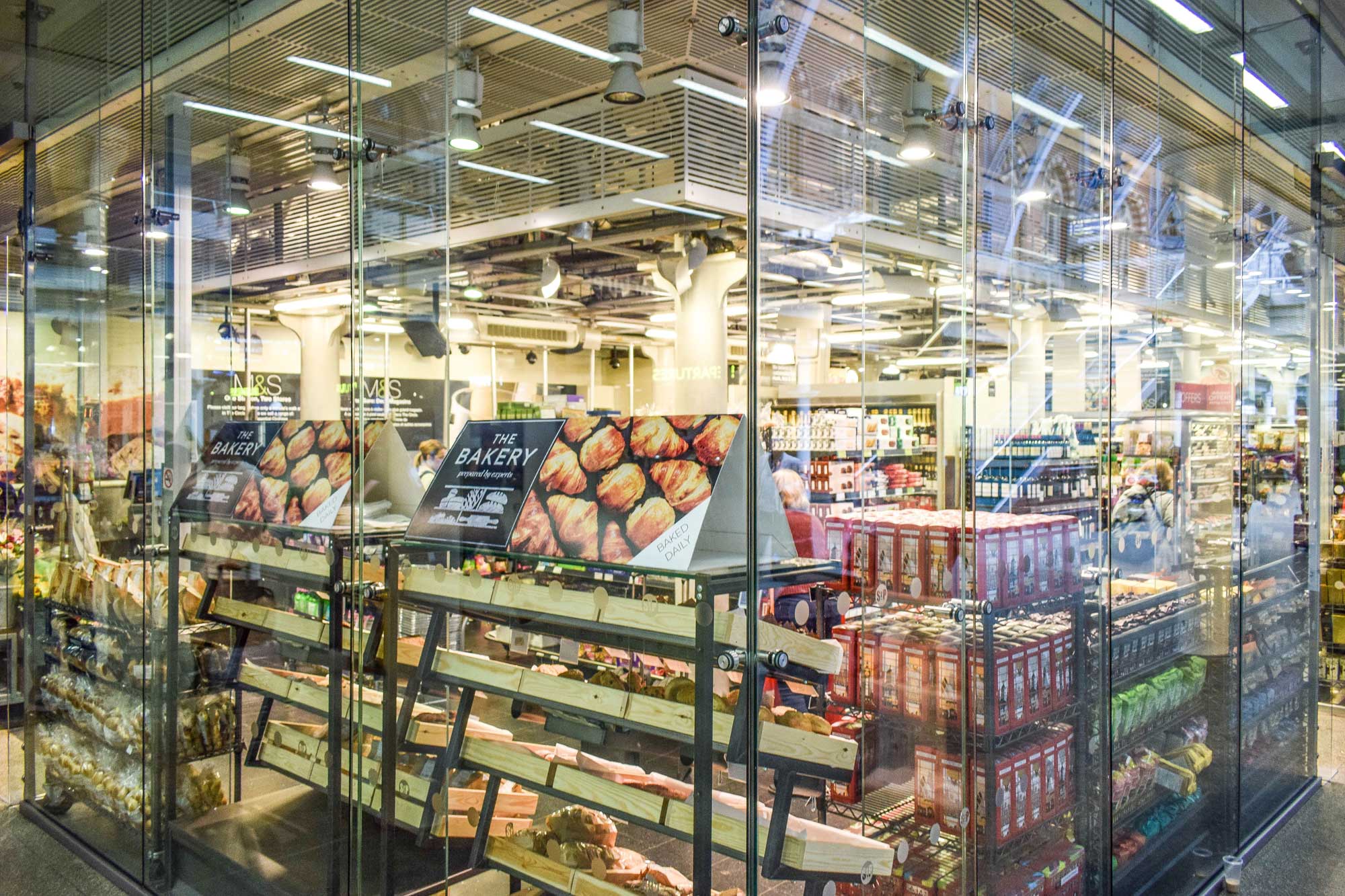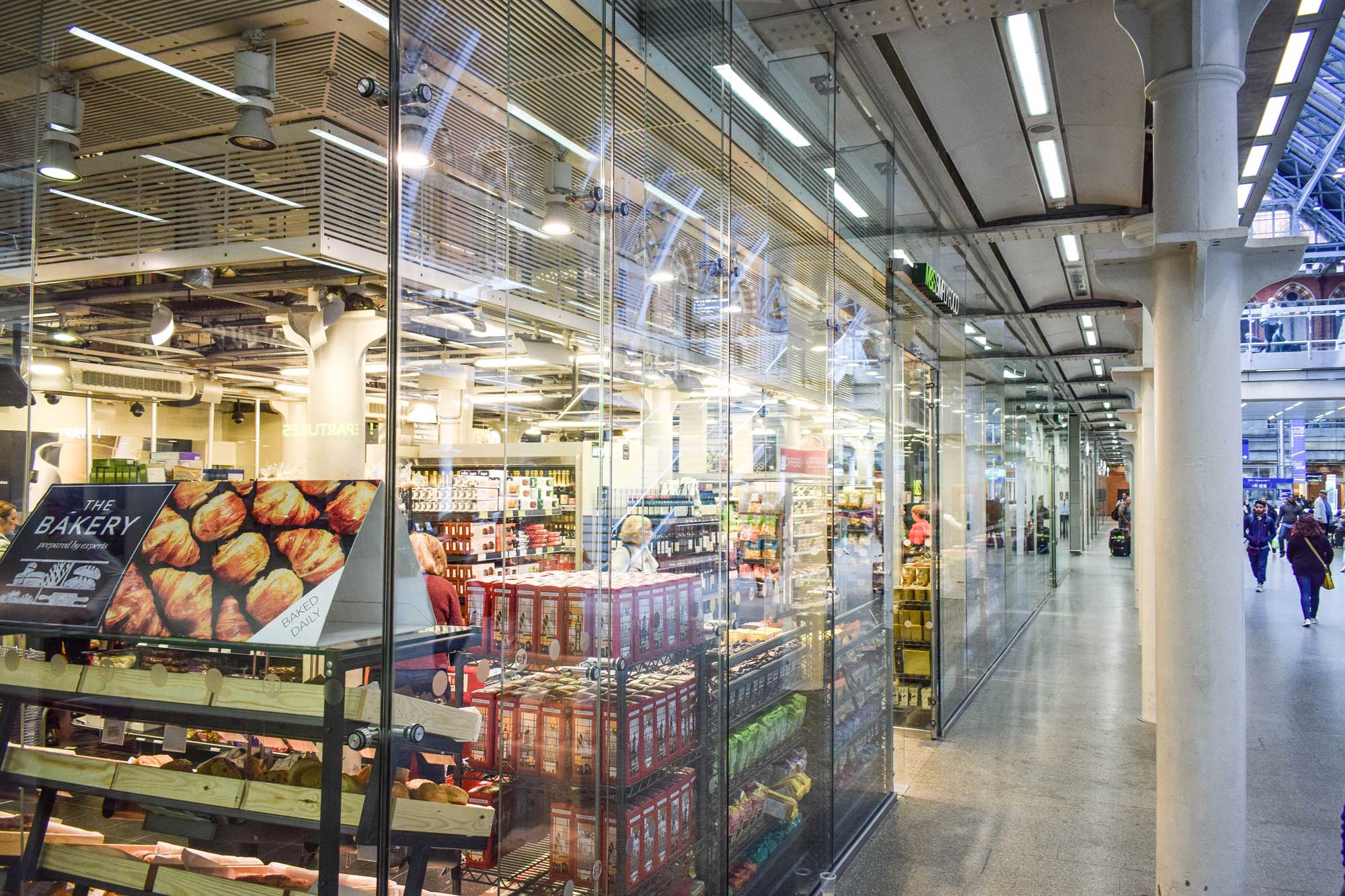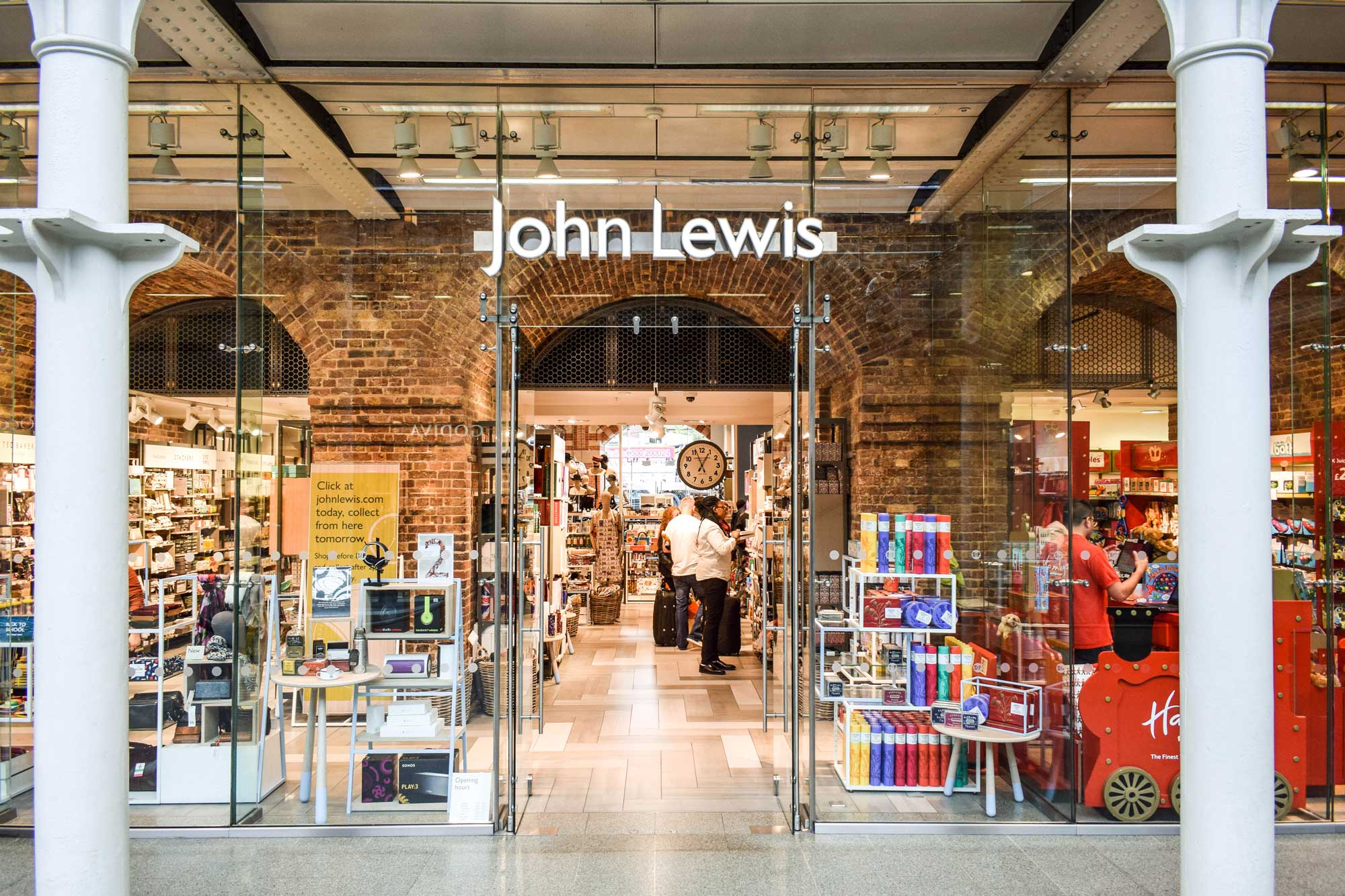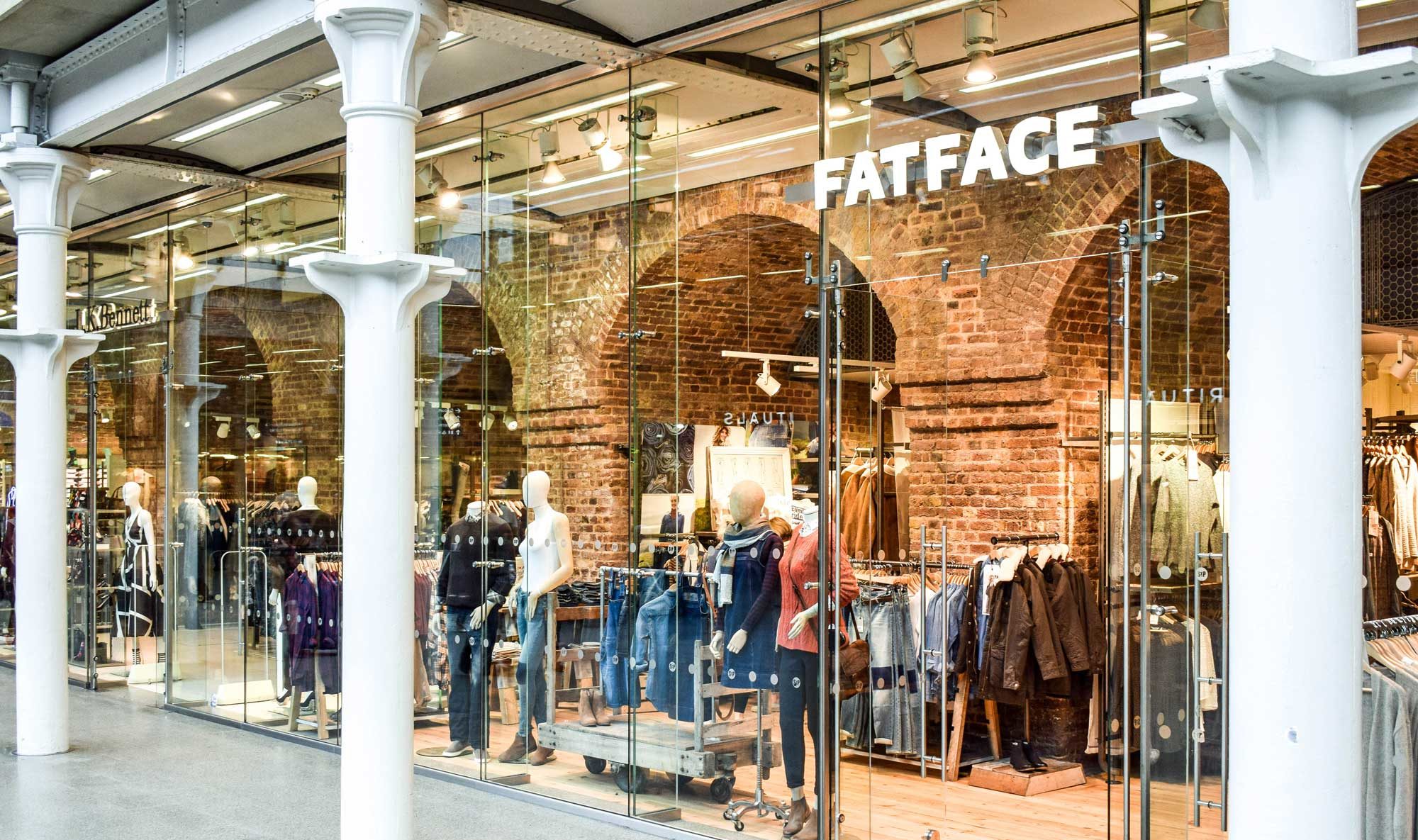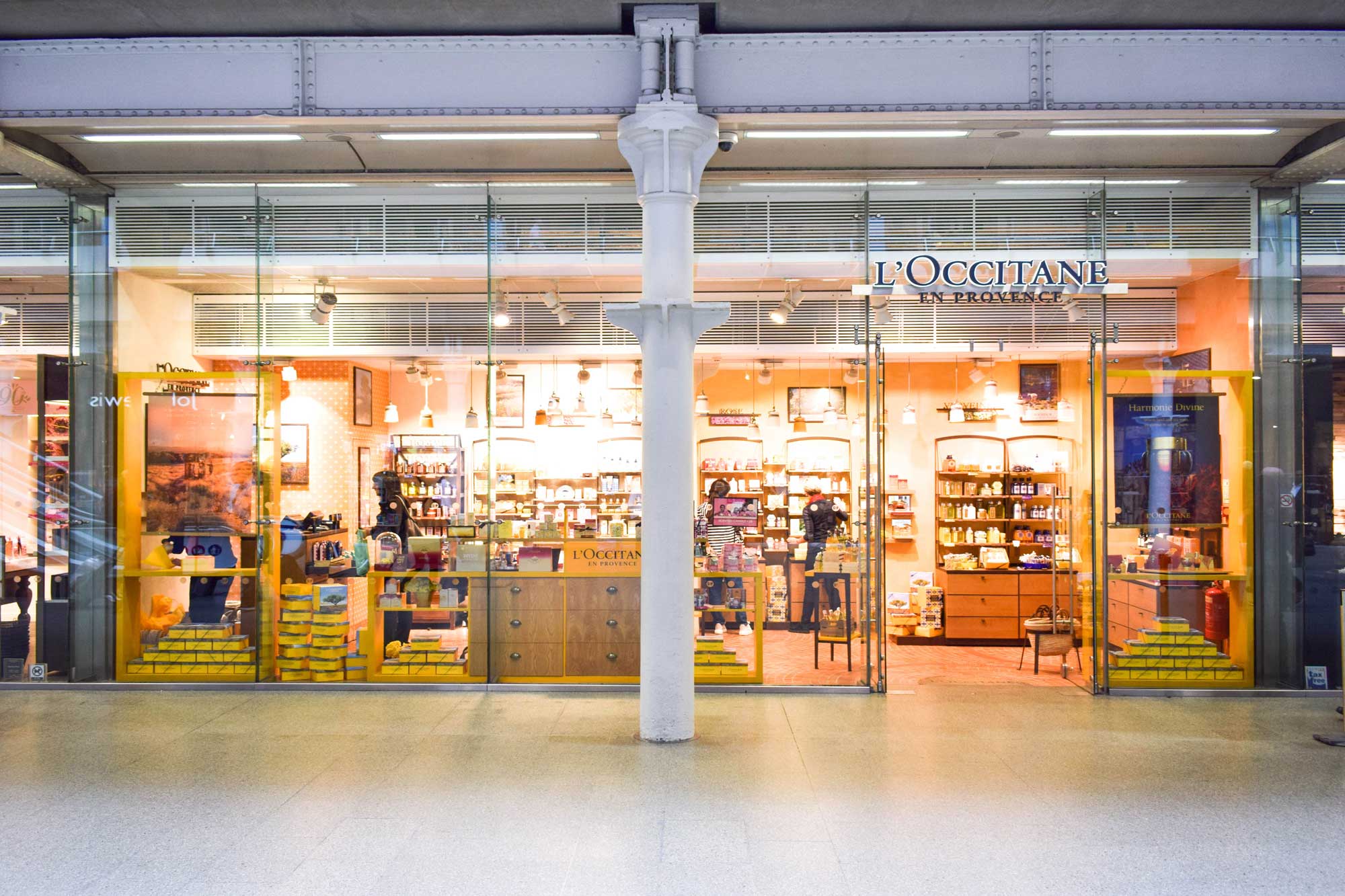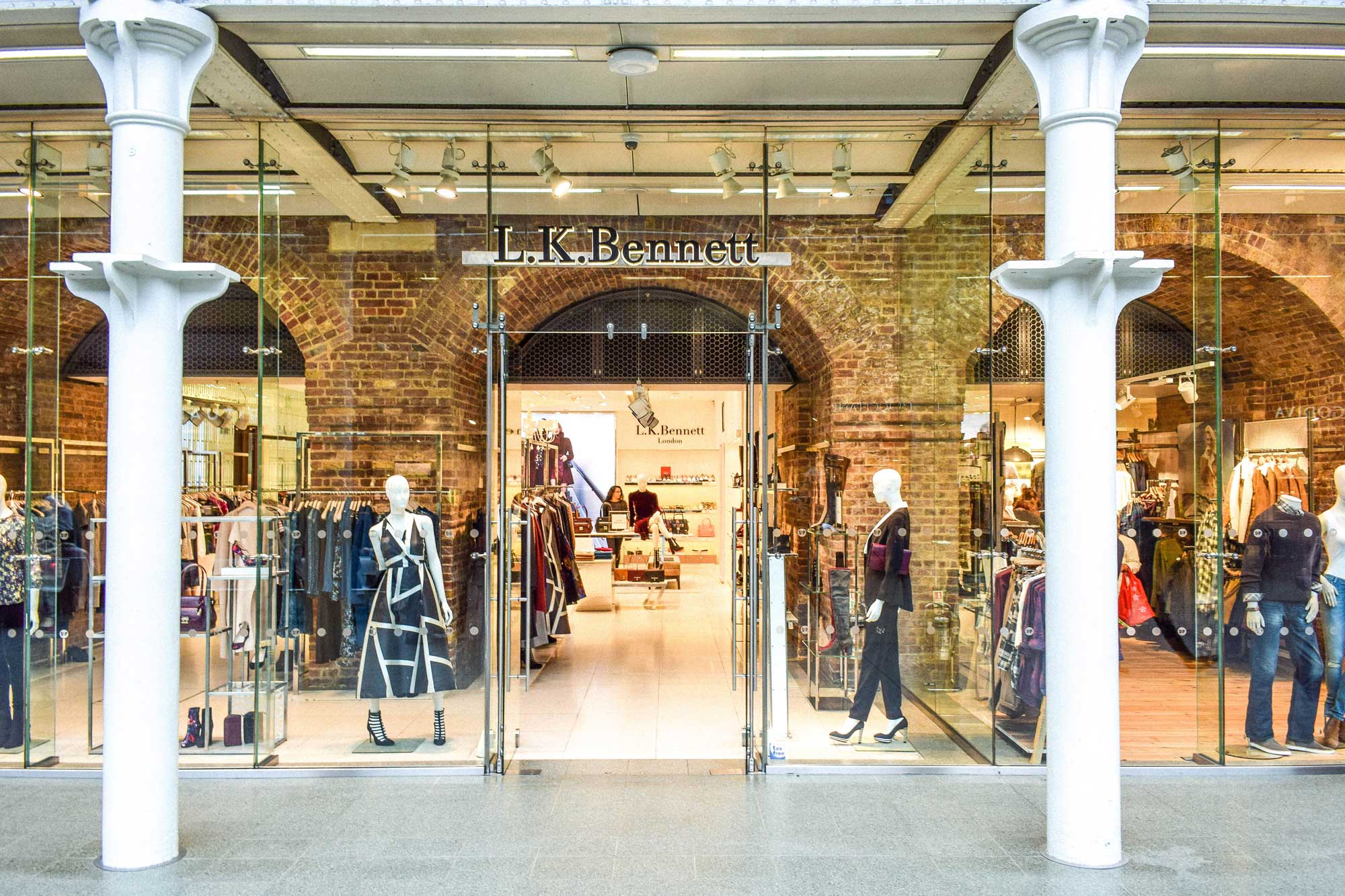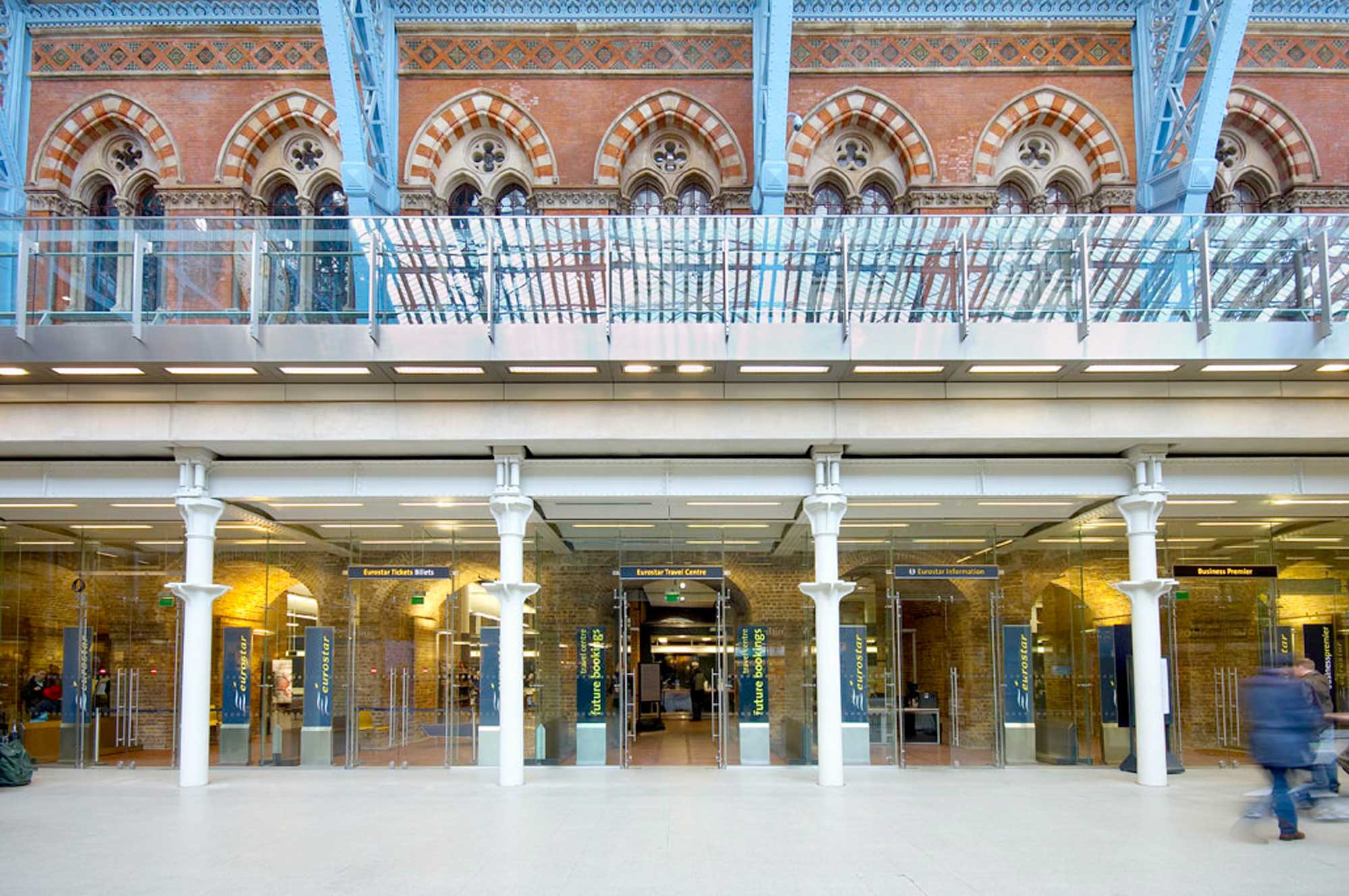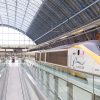Project Story
The restoration and modernisation of St. Pancras Station resulted in a travel hub that London can be proud of.
Helping to turn the 19th century railway station at St. Pancras into a 21st century Eurostar terminal was a huge undertaking for the contractors and architects. We were brought on to supply and install the impressive glass walls and balustrades in the main station and glazed shop fronts in the retail concourse below.
The building’s look combines its original raw brick finish, juxtaposed with the clean gloss of new glass and all the fittings of a modern rail terminus. But how do you install glass walls where the floors and ceilings can move up to 4cm up, down, left or right – due to the weight of the trains thundering through it?
We met this challenge with design and engineering ingenuity. In the platform areas, a combination of suspended bolt-fixed glazing and cantilevered glass fins were used, with automatic doors framed in a ground-based portal frame.
The solution we came up with hides the seals between the different materials allowing the glass and brickwork to exude the building’s grand character.
We also worked on the shopping concourse in under-crofting beneath the main platform areas. We were responsible for the shop fronts, with the building’s natural exposed brickwork arches offset by our modern, custom-made glazing.
As with the glass walls, barriers, balustrades and doors that we designed for the main railway station, the big problem in the retail strip was building movement. With trains passing overhead, this could be up to 4cm in any direction.
Project Summary
- Location: Kings Cross, London, N1C
- Client: Network Rail
- Architect: Rail Link Engineering & Chapman Taylor
- Main Contractor: Corber & ISG
- Status: Completed
- Sectors: Hospitality & Leisure, Retail, Infrastructure, Iconic Structures
- Exterior/Interior: Interior
- Expertise: Balustrades, Shop Fronts, Blast Resistant Glass, Fire Glazing, Internal Glass
- Project Value: C. £14M
Project Story Continued
To design the shop front glazing, we used 3D laser surveying and then applied our CAD expertise to model the glass construction and minimise gaps.
